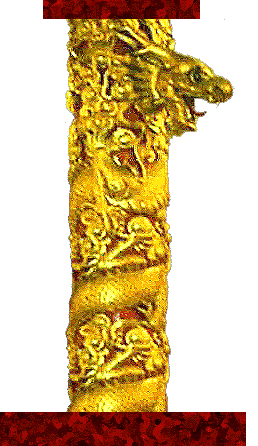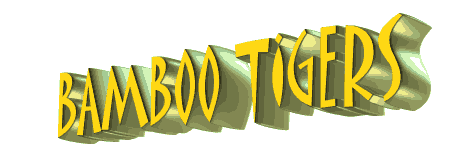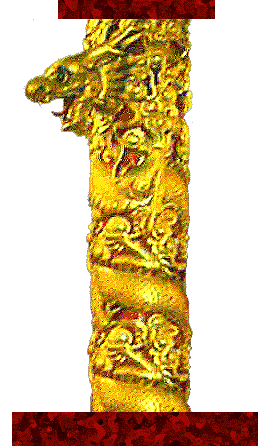| |
On the following Monday morning, the 12th of September, Dan Foley reported to the Homicide Detail for assignment to the Gang Task Force. Already forming was a nucleus comprising Homicide inspectors and several men from Central Station in the Chinatown area. Foley was the only one from Northern, but a few days later Bernie McNeil joined him.
A meeting was held in Lt. Daniel Murphy's office. Murphy was the officer in charge of Homicide. The new leader of the detail reported that Police Chief Charles Gain had given him carte blanche for equipment, manpower, overtime, and whatever else might be needed. This was to be an elite corps. "All we have to do is ask for it, and it's ours," Murphy said. "We want this case broken. The gang fighting has to stop."
Basically, two teams were formed, the investigators and the patrolmen. The patrolmen picked their own partners. As a patrolman, Foley elected for Fred Mollat. They started working together.
The Gang Task Force members who were inspectors at the time were John Fotinos, Dick Gamble, Carl Klotz, John McKenna, Mike Mullane, Ron Schneider and Jim Deasy. All were from Homicide except Gamble, who came from the Juvenile Bureau, and Deasy, from Intelligence. As for patrolmen, Paul Bertsch, Bob Bonnet, Leon Crouere, Larry Wong, Marshall Wong, Mickey Giraldi, Fred Lau and Dave Horton were from Central Station. Bernie McNeil and Foley were from Northern. Fred Mollat hailed from Intelligence, as did Tim Simmons. Rich Moses came from Richmond Station.
Jeannie Blasdell, a long-time secretary from the General Works Detail, stepped in to perform the clerical duties. Blasdell, whose late mother had worked for years in the District Attorney's office and whose sister was also a Police Department employee, knew how to deal with tough men preoccupied with tough situations. She began to implement Jim Deasy's new filing system, especially designed to accommodate the torrent of information that started pouring in.
On a lower floor in the Hall of Justice sat District Attorney Joseph Freitas, a relative newcomer to San Francisco government, having taken office the year before. Joe Freitas was sophisticated enough to know that an assistant D.A. should be assigned to work with the police on the Golden Dragon case. John Ferdon, Freitas' predecessor for a dozen years, had never given out such assignments before. An old-school D.A., Ferdon had believed in taking cases only when the police closed an investigation and presented the case for prosecution.
Freitas was an innovator and also politically ambitious. He recognized the political value to him of a successful Golden Dragon prosecution. The benefits to be derived from it, both for himself and for then-Police Chief Charles Gain, with whom he agreed on most issues, were incalculable. He scanned his staff for a suitable man to put on the case..
His eyes naturally fell on James A. Lassart, a veteran prosecutor with a "take-no-prisoners" image, who had handled a number of heavy Chinatown cases and knew about many of the older generation (ages 20 to 24) who still hung around with the gangs. But Lassart, already in the office for 10 years, was a Ferdon appointee. If Freitas wanted public credit for assisting Charlie Gain in breaking the Golden Dragon, he would do better to use a man of his own.
He found a likely prospect in Hugh Anthony Levine.
Announcement of Levine's appointment stirred up a storm of chagrin among the D.A. staffers. The "new kid on the block" had not fought his way up through their ranks. Levine had come direct from the Manhattan D.A.'s office in New York only three months before the massacre. He was neither San Franciscan nor even Californian, nor had he been long enough on the scene to know more about Chinatown than the average tourist. As Levine himself would phrase it in due time, "maybe being Jewish" didn't help either.
Freitas knew that Levine had been hired right out of Columbia Law School by the great Frank S. Hogan, New York County's late "Mr. District Attorney," and had already noticed the expertise his new recruit brought with him from the nation's premier prosecutor's office. Levine offered experience in sophisticated investigation, garnered in the nation's largest city, where it was routine for an assistant D.A. to be assigned to cases still in the investigative stage.
Learning of his appointment gave Levine no thrill. His first thought was, "I don't want to do it," but he kept his reticence to himself and accepted the assignment.
Just from reading about the Golden Dragon in the newspapers, it was apparent that it would be an extremely difficult case to solve. It would have to broken from the inside, which heralded a very long and often unsuccessful investigation. Levine did not want to be associated with a losing cause at this point in his career. Having been a senior homicide prosecutor in Manhattan, he felt he had already lost professional time by following his heart to the fresh new world of California. The last thing he needed now was a failure.
In the beginning, his job would be to serve as liaison with the Police Department. Nothing was clearly spelled out except that if a search warrant were required, Levine would supply it. His assignment took place within a few days of the Golden Dragon, actually before the formation of the Gang Task Force, but many of the people who were to comprise the "Dragon Force" were already picked out and were starting work on the case. Levine was told to continue with his other duties. There was nothing happening in the Golden Dragon at that moment which required a D.A.'s time.
However, Levine decided it would be wise to introduce himself immediately after the Gang Task Force was formed the following week. He went up to the fourth floor, one flight up, where the Force had been given a tiny room, a cubbyhole off the corridor. The cramped quarters were a far cry from the lavish setup promised by Chief Gain.
There, he saw John McKenna and Carl Klotz, neither of whom he knew. Nor did they know him. They had expected one of the long-time homicide D.A.'s like Tom Norman--who would later prosecute Dan White for the murder of Mayor George Moscone and City Supervisor Harvey Milk--or Jim Lassart or Jerry Benson, all of whom had been working with these inspectors for years. Levine sensed their initial wariness of him.
McKenna, making the intelligent assumption that Levine wouldn't be there if Freitas hadn't thought he could do the job, set out by showing him a chart with scores of Chinese names and the gang affiliations of each.
Levine's first impression was, My God, I'll never be able to learn all this!
McKenna embarked on thumbnail sketches of gang history and gang members. The young D.A. would admit afterward that none of it sank in deeply. There was too much to grasp in one sitting. But McKenna was very patient with him amid the clamor of telephones ringing and people running around them on all sides, pursuing every possible lead.
Rumors abounded: Wah Ching, Ghost Shadows and other Oriental gangsters from New York were headed westward to take over Chinatown; samurai retainers were being hired in Japan to avenge the death of a Japanese-American in the Golden Dragon. Every rumor proved false: the New Yorkers never showed up; the samurai warrior class had been abolished soon after the Meiji Restoration in 1868. These were but two among the dozens of rumors or conjectures that circulated in San Francisco.
No real leads came forth, but The City, in a state of fear and panic, seemed prepared to believe anything. Mayor George Moscone upped a reward for information leading to arrests--from $25,000 to $100,000, an amount unprecedented in American municipal history.
Photographs of known gang members were passed around the contemporary reincarnation of Jack Manion's old Chinatown Squad. The new Gang Task Force men hit the streets to talk with people in the area, trying to learn everything they could, as cops had done when a special unit was first formed to investigate another massacre in Chinatown--the Ross Alley Tong War--more than a hundred years before.
The Force accepted certain differences in dealing with Chinese criminals. Other ethnic groups had the propensity to brag, to discuss their crimes, to drop hints. Seeking macho credit for a hit held less importance among the Chinese. They had patience, and, once the mission was accomplished, had nothing to say about it outside their own cliques. Publicly, they played dumb. The success of the score was credit enough.
Statistics showed that most valedictorians at high school graduations in San Francisco were Chinese. The small percentage of Chinese kids who perverted this high quality of intelligence to crime included some potentially masterful thinkers. The gang leaders in all age groups were frequently brilliant.
The murder of Mouse Lee and the wounding of Mark Chan provided an example. Sly genius conceived the plan of hiding in Mark's own home. Daring accomplished it deftly. Witnesses in neighboring houses who saw the assassins scamper away were unable to offer any clues to identity. It took Mark, an unexpected survivor, to point out that they were Chinese.
The massacre of innocents at the Golden Dragon occurred as a natural legacy of the mutual antagonism that had roused the gangs to intra-cultural combat in the decade following 1967. It publicly dramatized the private plight of a Chinatown held captive behind its self-created wall of silence.
Accepting as facts of life the gun battles in the streets, the extortions of small businesses, and the daily risk of the assault or death of one's children had proved to be a high price to pay for maintenance of the ubiquitous wall. While, in a sense, ethnic integrity had been preserved from a flood of foreign interference, the invisible levee had also sandbagged law-abiding Chinese citizens into a frightening jungle. The piteous screams of the Golden Dragon's victims, as well as those of Mark Chan's grandmother when her grandson fell at her feet covered with blood, echoed as cries for relief both in Chinatown and The City at large.
From disasters, reforms are often born. The formation of the Gang Task Force bespoke a change that had been due for a long time.
| |
|









